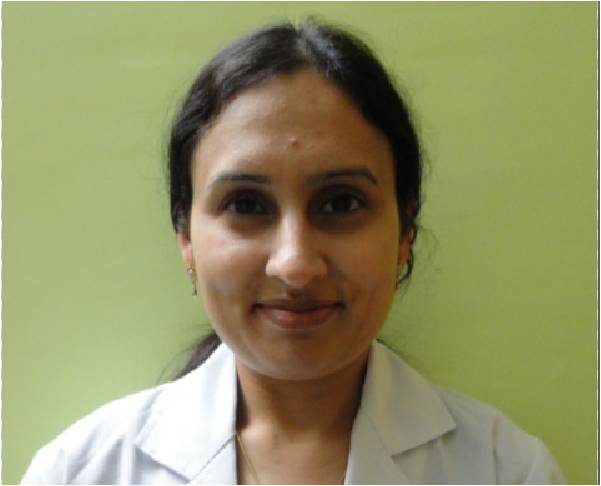What Would Diarrhea And Elevated CRP Levels Indicate While Experiencing Redness And Inflammation?

Question: many test...
Lipase <3 U/L 11 - 82 U/L
CRP 3.4 mg/dL 0.000 - 0.744 mg/dL
C-diff negative
CRP 3.3 mg/dL 0.000 - 0.744 mg/dL
redness and inflammation
Lipase <3 U/L 11 - 82 U/L
CRP 3.4 mg/dL 0.000 - 0.744 mg/dL
C-diff negative
CRP 3.3 mg/dL 0.000 - 0.744 mg/dL
redness and inflammation
Brief Answer:
High CRP indicates underlying inflammation. Urine culture recommended.
Detailed Answer:
Hello,
The investigations posted by you show an elevated CRP level.
CRP is a marker of inflammation.
You have mentioned redness and inflammation, however, site and duration of redness has not been mentioned.
In addition to that, the urine report suggests the presence of urine infection. I suggest you to get urine culture and sensitivity test.
Kindly post your entire history so that I can help you better.
Thanks and take care.
Regards,
Dr. Shailja Puri
Pathologist and Microbiologist
High CRP indicates underlying inflammation. Urine culture recommended.
Detailed Answer:
Hello,
The investigations posted by you show an elevated CRP level.
CRP is a marker of inflammation.
You have mentioned redness and inflammation, however, site and duration of redness has not been mentioned.
In addition to that, the urine report suggests the presence of urine infection. I suggest you to get urine culture and sensitivity test.
Kindly post your entire history so that I can help you better.
Thanks and take care.
Regards,
Dr. Shailja Puri
Pathologist and Microbiologist
Above answer was peer-reviewed by :
Dr. Prasad


My wife worked at a rehabilitation home for elder care and was an assistant activities director and she started developing diarrhea. Diarrhea and weight loss, 40 lbs weight loss in two months. Put on potassium meds for low levels of potassium. She had a colonoscopy, 3 polyps 3 removed and 3 biopsies taken and tested negative. Stool samples taken, negative. Will be doing a 2nd one tomorrow.
***
CT ABDOMEN AND PELVIS WITH CONTRAST
COMPARISON: None.
HISTORY: Unintentional weight loss, diarrhea for 2 months.
TECHNIQUE: 105 mL of Omnipaque 300 nonionic contrast injected intravenously without reported complication. Axial images obtained from the lung bases to the pubic symphysis with sagittal and coronal 2D reformatted images. Oral contrast administered: No. Automatic exposure control (AEC) was
utilized.
CT ABDOMEN FINDINGS:
There are multiple gallstones. Mild gallbladder wall thickening is suspected. No discrete pericholecystic inflammatory changes, however. The common bile duct is dilated measuring 9 mm in diameter.
There is diffuse wall thickening and abnormal mucosal enhancement of the distal ileum including the terminal ileum with adjacent inflammatory change. The appendix is not clearly visualized, but there are no definite secondary signs of acute appendicitis. There is no discrete fistula identified or
sinus tract in the right lower quadrant. No free fluid in the upper abdomen or free intraperitoneal air. No evidence for bowel obstruction.
Liver, spleen, pancreas, kidneys, and adrenal glands appear within normal limits. Normal caliber atherosclerotic abdominal aorta and right iliac artery. No discrete enlarged abdominal lymph nodes identified. No evidence for a mass.
CT PELVIS FINDINGS:
Wall thickening and abnormal mucosal enhancement of the distal ileum as detailed above. No free fluid in the pelvis. There is focal ill-defined enhancement extending from the mucosa of the anterior aspect of the rectum anteriorly into the right sagittal images 45-46 of 95 and axial images 83 and
84 of 94. This could be a rectovaginal fistula. There is no gas in the vagina, however. Evaluation is compromised by absence of oral contrast in the rectum and underdistention of the rectum. No discrete enlarged pelvic lymph nodes. No evidence for a mass.
There are degenerative changes of both hips. There is an 8 mm probable loose body rather than a benign bony excrescence adjacent to the anteromedial aspect of the right femoral neck.
IMPRESSION:
1. Diffuse abnormal wall thickening and mucosal enhancement with adjacent inflammatory change of the distal ileum including the terminal ileum consistent with an acute infectious or inflammatory enteritis. These findings could be secondary to Crohn's disease.
2. Focal area of abnormal mucosal enhancement eccentric to the right retroperitoneum the anterior wall the rectum which could be a rectovaginal fistula. High-resolution MRI of the pelvis with and without contrast could be considered if clinically indicated.
3. Cholelithiasis with probable mild gallbladder wall thickening. There is also mild biliary ductal dilatation, and distal obstruction is not excluded. Consider MRCP if clinically indicated.
4. No evidence for malignancy in the abdomen or pelvis.
I have more test most are negative results...
***
My wife XXXXXXX has diarrhea daily. Mostly in the mornings and sometimes late mornings.
***
White Blood Cells 4.7 X10E9/L 4.8 - 10.8 X10E9/L
RBC count 4.24 X10E12/L 3.80 - 5.20 X10E12/L
Hemoglobin 12.5 g/dL 11.7 - 16.0 g/dL
Hematocrit 36.9 % 35 - 47 %
MCV 87 fL 81 - 100 fL
MCH 29.4 pg 26 - 33.5 pg
MCHC 33.8 g/dL 32 - 36 g/dL
RDW 15.1 % 11.5 - 14.7 %
Platelets 316 X10E9/L 150 - 450 X10E9/L
MPV 7.7 fL 7 - 12 fL
% neutrophils 66.2 % %
% lymphocytes 25.3 % %
% monocytes 7.7 % %
% eosinophils 0.4 % %
% basophils 0.4 % %
Neutrophils Absolute 3.1 X10E9/L 1.5 - 6.6 X10E9/L
Lymphocytes Absolute 1.2 X10E9/L 1.0 - 3.5 X10E9/L
Monocytes Absolute 0.4 X10E9/L 0 - 0.9 X10E9/L
Eosinophils Absolute 0.0 X10E9/L 0.0 - 0.4 X10E9/L
Basophils Absolute 0.0 X10E9/L 0 - 0.9 X10E9/L
***
URINALYSIS - Details
Color XXXXXXX YELLOW
Turbidity HAZY CLEAR
Specific gravity 1.022 1.003 - 1.035
Nitrite Negative Negative
Ph urine 6.0 5.0 - 8.5
Leukocyte esterase Small Negative
Protein Trace mg/dL Negative mg/dL
Glucose, Ur Negative mg/dL Negative mg/dL
Ketones urine Trace mg/dL Negative mg/dL
Urobilinogen 0.2 eu/dL <1.1 eu/dL
Bilirubin, urine Small Negative
Not confirmed, interpret positive results with caution.
Hemoglobin Negative Negative
RBC 1 /hpf 0 - 5 /hpf
Squamous epithelium 9 /hpf 0 - 5 /hpf
Bacteria MANY NONE
WBC 18 /hpf 0 - 5 /hpf
***
CT ABDOMEN AND PELVIS WITH CONTRAST
COMPARISON: None.
HISTORY: Unintentional weight loss, diarrhea for 2 months.
TECHNIQUE: 105 mL of Omnipaque 300 nonionic contrast injected intravenously without reported complication. Axial images obtained from the lung bases to the pubic symphysis with sagittal and coronal 2D reformatted images. Oral contrast administered: No. Automatic exposure control (AEC) was
utilized.
CT ABDOMEN FINDINGS:
There are multiple gallstones. Mild gallbladder wall thickening is suspected. No discrete pericholecystic inflammatory changes, however. The common bile duct is dilated measuring 9 mm in diameter.
There is diffuse wall thickening and abnormal mucosal enhancement of the distal ileum including the terminal ileum with adjacent inflammatory change. The appendix is not clearly visualized, but there are no definite secondary signs of acute appendicitis. There is no discrete fistula identified or
sinus tract in the right lower quadrant. No free fluid in the upper abdomen or free intraperitoneal air. No evidence for bowel obstruction.
Liver, spleen, pancreas, kidneys, and adrenal glands appear within normal limits. Normal caliber atherosclerotic abdominal aorta and right iliac artery. No discrete enlarged abdominal lymph nodes identified. No evidence for a mass.
CT PELVIS FINDINGS:
Wall thickening and abnormal mucosal enhancement of the distal ileum as detailed above. No free fluid in the pelvis. There is focal ill-defined enhancement extending from the mucosa of the anterior aspect of the rectum anteriorly into the right sagittal images 45-46 of 95 and axial images 83 and
84 of 94. This could be a rectovaginal fistula. There is no gas in the vagina, however. Evaluation is compromised by absence of oral contrast in the rectum and underdistention of the rectum. No discrete enlarged pelvic lymph nodes. No evidence for a mass.
There are degenerative changes of both hips. There is an 8 mm probable loose body rather than a benign bony excrescence adjacent to the anteromedial aspect of the right femoral neck.
IMPRESSION:
1. Diffuse abnormal wall thickening and mucosal enhancement with adjacent inflammatory change of the distal ileum including the terminal ileum consistent with an acute infectious or inflammatory enteritis. These findings could be secondary to Crohn's disease.
2. Focal area of abnormal mucosal enhancement eccentric to the right retroperitoneum the anterior wall the rectum which could be a rectovaginal fistula. High-resolution MRI of the pelvis with and without contrast could be considered if clinically indicated.
3. Cholelithiasis with probable mild gallbladder wall thickening. There is also mild biliary ductal dilatation, and distal obstruction is not excluded. Consider MRCP if clinically indicated.
4. No evidence for malignancy in the abdomen or pelvis.
I have more test most are negative results...
***
My wife XXXXXXX has diarrhea daily. Mostly in the mornings and sometimes late mornings.
***
White Blood Cells 4.7 X10E9/L 4.8 - 10.8 X10E9/L
RBC count 4.24 X10E12/L 3.80 - 5.20 X10E12/L
Hemoglobin 12.5 g/dL 11.7 - 16.0 g/dL
Hematocrit 36.9 % 35 - 47 %
MCV 87 fL 81 - 100 fL
MCH 29.4 pg 26 - 33.5 pg
MCHC 33.8 g/dL 32 - 36 g/dL
RDW 15.1 % 11.5 - 14.7 %
Platelets 316 X10E9/L 150 - 450 X10E9/L
MPV 7.7 fL 7 - 12 fL
% neutrophils 66.2 % %
% lymphocytes 25.3 % %
% monocytes 7.7 % %
% eosinophils 0.4 % %
% basophils 0.4 % %
Neutrophils Absolute 3.1 X10E9/L 1.5 - 6.6 X10E9/L
Lymphocytes Absolute 1.2 X10E9/L 1.0 - 3.5 X10E9/L
Monocytes Absolute 0.4 X10E9/L 0 - 0.9 X10E9/L
Eosinophils Absolute 0.0 X10E9/L 0.0 - 0.4 X10E9/L
Basophils Absolute 0.0 X10E9/L 0 - 0.9 X10E9/L
***
URINALYSIS - Details
Color XXXXXXX YELLOW
Turbidity HAZY CLEAR
Specific gravity 1.022 1.003 - 1.035
Nitrite Negative Negative
Ph urine 6.0 5.0 - 8.5
Leukocyte esterase Small Negative
Protein Trace mg/dL Negative mg/dL
Glucose, Ur Negative mg/dL Negative mg/dL
Ketones urine Trace mg/dL Negative mg/dL
Urobilinogen 0.2 eu/dL <1.1 eu/dL
Bilirubin, urine Small Negative
Not confirmed, interpret positive results with caution.
Hemoglobin Negative Negative
RBC 1 /hpf 0 - 5 /hpf
Squamous epithelium 9 /hpf 0 - 5 /hpf
Bacteria MANY NONE
WBC 18 /hpf 0 - 5 /hpf
Brief Answer:
Symptoms & radio-logical findings favor IBD - terminal ileum, biopsy suggested.
Detailed Answer:
Hello,
The abnormal finding in all the lab reports is thickening of the terminal ileum.
A biopsy from the terminal ileum needs to done to look for disease or pathology in the terminal ileum.
CRP is elevated in inflammatory bowel disease (IBD). Symptoms of diarrhea also support a possibility of IBD.
However, histopathological examination of terminal ileal biopsy can only help to diagnose the condition.
Hope I have answered your query.
Thanks and take care.
Regards,
Dr. Shailja Puri
Pathologist and Microbiologist
Symptoms & radio-logical findings favor IBD - terminal ileum, biopsy suggested.
Detailed Answer:
Hello,
The abnormal finding in all the lab reports is thickening of the terminal ileum.
A biopsy from the terminal ileum needs to done to look for disease or pathology in the terminal ileum.
CRP is elevated in inflammatory bowel disease (IBD). Symptoms of diarrhea also support a possibility of IBD.
However, histopathological examination of terminal ileal biopsy can only help to diagnose the condition.
Hope I have answered your query.
Thanks and take care.
Regards,
Dr. Shailja Puri
Pathologist and Microbiologist
Note: Do you have more questions on diagnosis or treatment of blood disorders? Ask An Expert/ Specialist Now
Above answer was peer-reviewed by :
Dr. Raju A.T

Answered by

Get personalised answers from verified doctor in minutes across 80+ specialties



